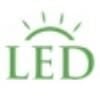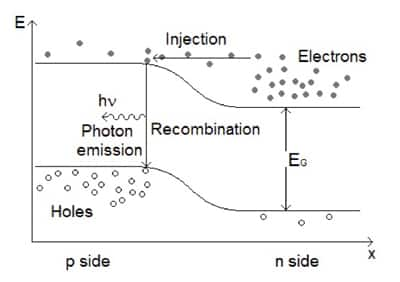Being old and no longer supported is completely different from the manufacturer uploading firmware that bricks the phone which is what the original comment was intending to suggest. Saying once the new generation of lights come out the last gen “magically” stops working. I was only pointing out the fact that apple has been caught tampering with programming to mess up battery life and such to try and force people to upgrade when there really isn’t a need.I just dumped my Pixel 2 for a pixel 4..
Perfectly useable phone.. though no longer supported ..
Don't blame manuf.....
Navigation
Install the app
How to install the app on iOS
Follow along with the video below to see how to install our site as a web app on your home screen.
Note: This feature may not be available in some browsers.
More options
You are using an out of date browser. It may not display this or other websites correctly.
You should upgrade or use an alternative browser.
You should upgrade or use an alternative browser.
The myth that LED lights last forever
- Thread starter The Opinionated Reefer
- Start date
- Tagged users None
The words of a MH/T-5 troll gagging for an argument? Anecdotal examples and bad math don't make a convincing case.Many enthusiasts have long favored LEDs over T5s, citing the belief that while T5 bulbs require annual replacement, LEDs will remain robust for over a decade. But where did this enduring myth about the infinite lifespan of LEDs originate?
Prominent manufacturers such as Kessil highlight a life expectancy of 35,000 hours for their lights, which translates to around 5-7 years for the average user. Similarly, Philips' coral care lights advertise 25,000 hours at full light output, amounting to just 2.5 years or up to 5 years if operated for 12 hours daily.
Considering the quality reputation of these brands, one might infer that other less renowned brands might offer even shorter lifespans. A notable observation from a forum memeber mentioned that the Red Sea ReefLed 90, which originally emitted 800 par directly underneath when new, declined to 600 par after just two years.
Moreover, there have been accounts of hobbyists who, upon integrating a second identical LED unit, observed noticeable discrepancies in brightness even with identical settings.
This evidence suggests that LEDs, akin to traditional bulbs, experience degradation over time, with shifts in spectral output mirroring that of bulbs and tubes. Contrary to popular belief, studies by BRS have shown that T5 tubes can function effectively for more than 18 months before requiring replacement. Furthermore, they offer superior light spread compared to other sources. This accentuates the argument that LED fixtures dont really provide value for their cost. If one were to compare, they'd only need three sets of T5 bulb replacements over the lifespan of an average LED fixture and would likely achieve superior results, especially with specific corals like sps.
It costs a lot to have the innnards and outards designed, manufactured, assembled, marketed and shipped to the sellers. App design. Warranty repairs also. I have a feeling the markup is still 50%.Interesting how the cheaper to produce leds cost sooo much more to purchase a fixture.
Still, you're stuck with the configuration (usually proprietary) they come with.
My first DIY LEDs were mounted on the back of the back of an old aluminum Left Turn Only sign from the scrapyard . Blues, royal blues and some whites. I think it was $50-100 total?
Last edited:
That and the expensive led units aren’t marked up for the cost of diodes (for the most part). It’s the relatively microscopic economy of scale involved in producing such a “custom” item relative to commercial general use lighting. And the software engineering and service add to the cost, clunky as much of it isIt costs a lot to have the innnards and outards designed, manufactured, assembled, marketed and shipped to the sellers. App design. Warranty repairs also. I have a feeling the markup is still 50%.
Still, you're stuck with the configuration (usually proprietary) they come with.
My first DIY LEDs were mounted on the back of the back of an old aluminum Left Turn Only sign from the scrapyard . Blues, royal blues and some whites. I think it was $50-100 total?
Have you noticed that every new Raadion generation is the same price as the previous, and the previous gens don't seem to go down in price?That and the expensive led units aren’t marked up for the cost of diodes (for the most part). It’s the relatively microscopic economy of scale involved in producing such a “custom” item relative to commercial general use lighting. And the software engineering and service add to the cost, clunky as much of it is
Actually I wondered if anyone has ever
(1) calibrated the output power per actual spectrum for every watt of input power for Metal Halides and or T5s.
(2) calibrated the output power/PAR/lumens/intensity for every watt of input power for a good led fixture
(3) amount of area ie T5 tubes or leds required to produce the same PAR levels
(4) cost for (3) including replacement cost over say a 5 year period. I am assuming leds degrade aftar 5 years
From those 4 points I think we can figure out which is more cost effective in the long run...
If the result of (2) turns out better than (1) than it's a straight foward argument that at every part of the spectrum the Leds out perform T5/Halides. If there are components of the spectrum in the T5 and Halides that do not exists or not covered by the leds, then we need to know if those missing portion of the spectrum is important or not.
Even if (2) is better than (1), we need data from (3) and (4) in order to be sure.
(1) calibrated the output power per actual spectrum for every watt of input power for Metal Halides and or T5s.
(2) calibrated the output power/PAR/lumens/intensity for every watt of input power for a good led fixture
(3) amount of area ie T5 tubes or leds required to produce the same PAR levels
(4) cost for (3) including replacement cost over say a 5 year period. I am assuming leds degrade aftar 5 years
From those 4 points I think we can figure out which is more cost effective in the long run...
If the result of (2) turns out better than (1) than it's a straight foward argument that at every part of the spectrum the Leds out perform T5/Halides. If there are components of the spectrum in the T5 and Halides that do not exists or not covered by the leds, then we need to know if those missing portion of the spectrum is important or not.
Even if (2) is better than (1), we need data from (3) and (4) in order to be sure.
I know there are partial graphs/studies out there. You just have to put in the work to find them.Actually I wondered if anyone has ever
(1) calibrated the output power per actual spectrum for every watt of input power for Metal Halides and or T5s.
(2) calibrated the output power/PAR/lumens/intensity for every watt of input power for a good led fixture
(3) amount of area ie T5 tubes or leds required to produce the same PAR levels
(4) cost for (3) including replacement cost over say a 5 year period. I am assuming leds degrade aftar 5 years
From those 4 points I think we can figure out which is more cost effective in the long run...
If the result of (2) turns out better than (1) than it's a straight foward argument that at every part of the spectrum the Leds out perform T5/Halides. If there are components of the spectrum in the T5 and Halides that do not exists or not covered by the leds, then we need to know if those missing portion of the spectrum is important or not.
Even if (2) is better than (1), we need data from (3) and (4) in order to be sure.
Here's a place to start. Take it with a grain of salt since they're in the LED sales business and don't cite their sources.
 www.ledlightingsupply.com
www.ledlightingsupply.com
Metal Halide vs LED | LEDLightingSupply.com
Metal Halide vs LED: We break down all the factors that you should be aware of before making a decision to convert from Metal Halide to LED. Here are the 13 reasons we think LED wins over Metal Halide.
My xr30s only lasted a few months , then I put the radium’s back on my tank. No thanks the led tanks all look dead compared to halides
My experience with LED is quite variable. I’ve had about 2 dozen Kessil spots across different models. Getting 35,000 hours out of them (8 years at 12 hrs/day) is optimistic. Had a few 160s get there, but none of the 360. Supporting electronics seem to go before the diodes. My Radion G4s have fared better; they’re approaching 35,000 hours. Not sure anyone that pays attention thinks they’ll last forever.
I do still miss my old MH setup; I just don’t miss the heat. Had to match the look though. I used only double ended bulbs and replaced them about every 18 months.
I do still miss my old MH setup; I just don’t miss the heat. Had to match the look though. I used only double ended bulbs and replaced them about every 18 months.
Similar threads
- Replies
- 41
- Views
- 810
New Posts
-
-
-
-
-
HIGH New Clarification of our TOS regarding Emoji Etiquette and Trolling
- Latest: TangerineSpeedo


















